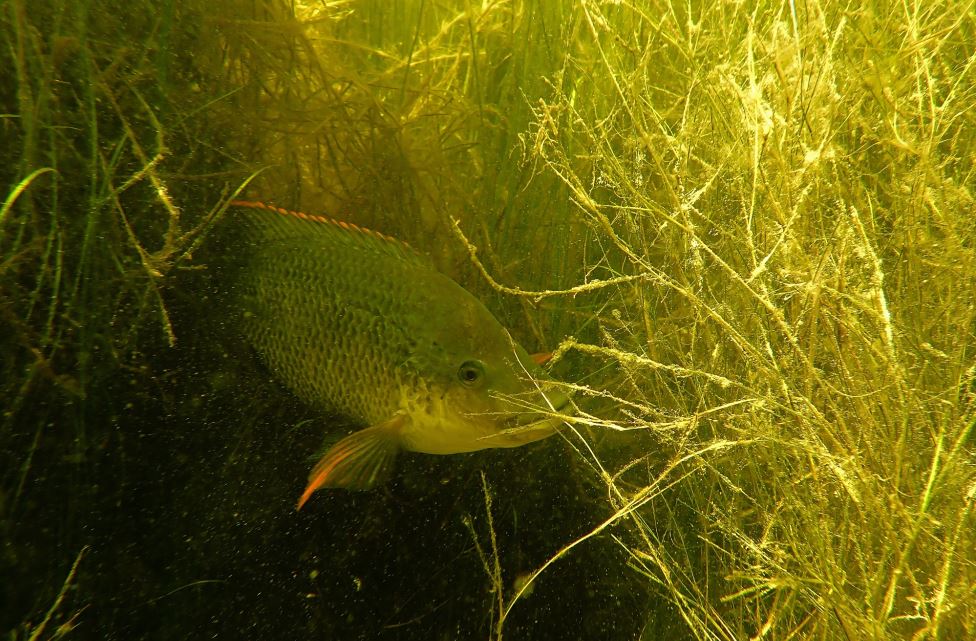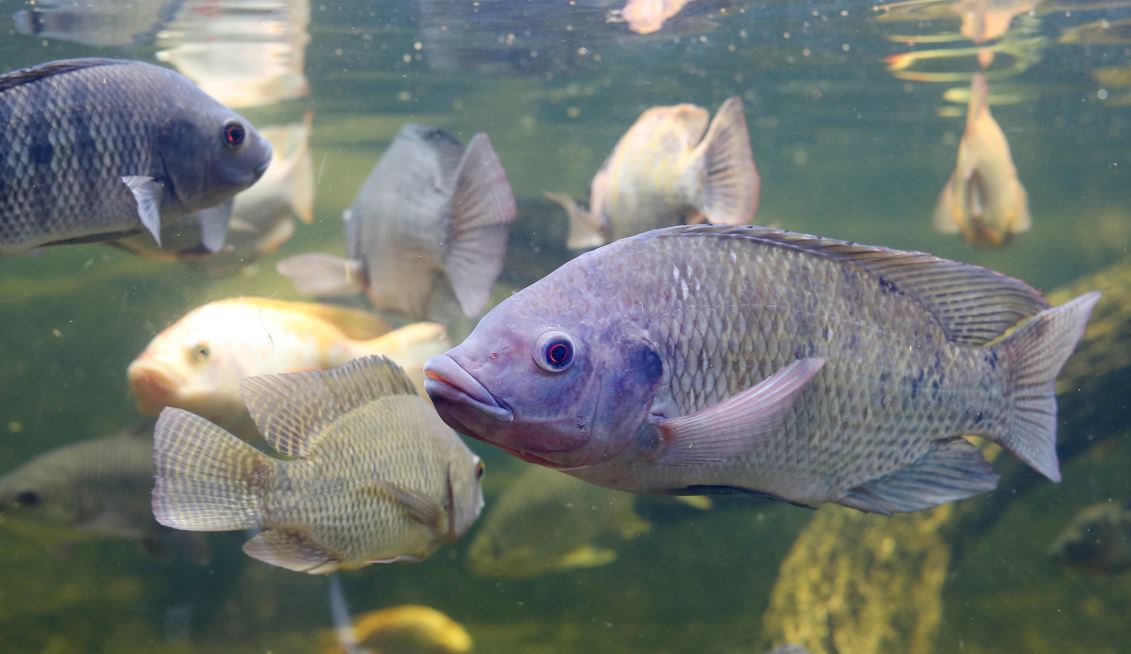June 16, 2023
For Indonesian fishermen and their families, tilapia fish provide a sustainable source of food and a reliable income. Two species in particular have grown in popularity since their introduction to these shores, and have become a mainstay of ponds, fisheries, and aquaculture projects across the archipelago.
Since their introduction to Indonesia, Nile tilapias (Tilapia nilotica) and Mozambique tilapias (Tilapia mossambica) have been a major success story, adapting well to various difficult conditions and thriving in places where other fish tend to struggle. More recently, selective breeding programs by the Ministry of Marine Affairs and Fisheries (MMAF) have created new strains and opened up new opportunities for fishers.
As tilapia continue to grow in number, value, and popularity, it’s worth asking: Where did they come from? How do they live? What makes them successful? In this article, we’ll swim alongside two of Indonesia’s most popular imports in search of answers. Here are five main differences between Mozambique tilapia and Nile tilapia:
1. Physical appearance
Adult Mozambique tilapia can grow to 40cm (16 in) in length and weigh as much as 2kg (4.5 lbs). By comparison, Nile tilapia can reach 60 cm (24 in), and weigh 5kg (11 lbs). With both species, the males tend to grow faster and larger than the females. Nile tilapia are brown or gray in color, usually with some stripes or bands on their body – and especially the tail. During the breeding season, males develop a reddish color on their fins. Mozambique tilapia are less colorful, but have distinctive long dorsal fins with spines at the tips.
2. Habitat
Native to southeastern Africa, Mozambique tilapia usually prefer to live in slow-moving water like rivers, canals, and creeks. They can also be found in the upper reaches of estuaries and coastal lagoons. This hardy and adaptable fish can make it just about anywhere – they even pop up in urban drains and saltwater. This ability to fit a range of habitats has made the Mozambique tilapia widespread and successful.
The Nile tilapia is native to most parts of Africa, and can be found in lakes and rivers from Egypt to the Gambia and the Lake Chad basin. It has also been introduced to many other places worldwide, successfully colonizing rivers in Europe, Asia, North America, and South America. Like the Mozambique variety, adaptability has been the key to Nile tilapia’s success – they can live in most freshwater habitats, including streams, rivers, lakes, and ponds; but can also survive in brackish or salty water and at a range of temperatures.
3. Life span
Both Mozambique tilapia and Nile tilapia can live for up to (and sometimes beyond) 10 years. Nile tilapia reach sexual maturity at around 10-30cm (4-12 in), and only breed when water temperatures are above 20°C (68°F). They build nests, spawn every 30 days, and brood hatchlings in their mouths.

Mozambique tilapia share many of these characteristics; they are also maternal mouth-brooders, with males making nests for the females to incubate the eggs. However, Mozambique tilapias look after their young for much longer than most other fish, and it’s believed this creates a social bond between adults and young.
4. Diet
Mozambique tilapia will eat just about anything. These omnivores will hoover up algae, plant matter, invertebrates, and sometimes even other fish. Because they don’t rely on one specific food source, they’re able to colonize lots of different environments. Like their Mozambique cousins, Nile tilapia have a diverse diet. They’ll help themselves to phytoplankton and algae, while also hoovering up plant matter and insect larvae such as mosquitoes.
5. The benefits they provide
The Nile tilapia’s love of mosquito larvae makes them a useful ally in the fight against malaria in Africa. In some places, they’re cultivated or introduced specifically for this purpose. But since these fish are both great travelers, they offer benefits to fishers far and wide. Mozambique tilapia can live in all kinds of water; as a result, they’re a useful source of metal toxicity data for studies into risk assessments for local freshwater species.
In Indonesia, Mozambique tilapia provide a reliable source of food and income for traditional fishers. These fish can be farmed in high densities and in low-quality water, and will happily eat inexpensive plant-based feeds such as soy or corn. This makes them perfectly suited to aquaculture. For local fishermen and their families, this makes Mozambique tilapia a very beneficial fish.
Fisherman’s friend: Indonesia’s love of tilapias
Although they’re not native to Indonesia, tilapia have become a welcome and successful addition to the country’s waters. Their hardiness and versatility make them easy to look after, and farmers use all sorts of methods to cultivate them – from traditional earthen ponds and brackish river systems, to raceways, cages, and more complex bio floc systems.

Like many foreign imports to Indonesian soil, tilapia have flourished and made the archipelago their home. In the last decade alone, tilapia production has grown by almost 300 percent (from 400,000 tons in 2010 to 1.1 million tons in 2020), replacing carp as the country’s most widely cultivated species. Looking back over the past 20 years, at least 10 new strains of tilapia have been developed by researchers in Indonesia, designed with Indonesian fisheries in mind.
With their long lifespan, delicious meat, and fast breeding rates, the Nila and the Mujair provide a reliable and sustainable source of food and income for Indonesian fishers. These great colonizers can help reduce disease and provide a clear indication of water quality that can support the introduction of other aquaculture species. They are great parents and pioneers. Over the years, they have provided for Indonesia’s fishermen; throughout the archipelago, tilapia in the tank means food on the table and money in the bank.
A cautionary tale: balancing the positive and negative aspects of tilapias
Despite the many positive impacts of tilapias, there are potentially negative aspects to their success too. As an invasive species, they pose a threat to their native counterparts in Indonesian freshwater ecosystems by competing for vital resources such as nutrition, light, space, and water. With this in mind, it is essential to manage these populations responsibly and maintain the ecological integrity of Indonesian freshwater habitats.
A cautionary tale comes from India, where the Mozambique and the Nile tilapia were introduced into river systems to boost food security. Their natural hardiness and adaptability made them an instant success – captive populations soon spilled over into waterways, and the tilapia began to compete with wild populations, pushing them to the margins in biodiversity hotspots.
Lessons learned from India’s experience with tilapias are valuable. They show us that, although the introduction of non-native species can offer many benefits to food security, livelihoods, and even disease prevention, their integration needs to be carefully managed and we must have a clear understanding of the potential risks they pose to local ecosystems.
Due to this reason, RER collaborates closely with the Serkap Jaya Lestari group fishermen’s group to raise awareness about the potential hazards linked to the introduction of invasive species into ecosystems such as RER.